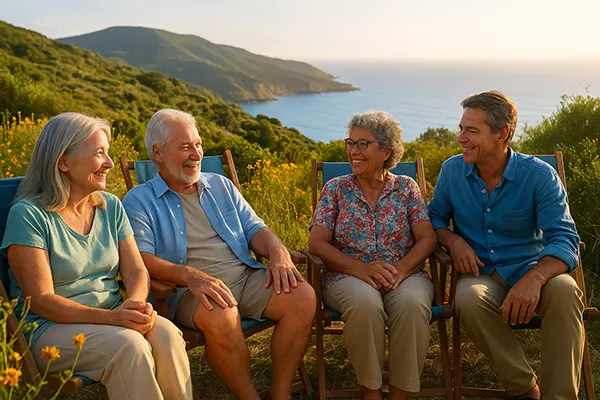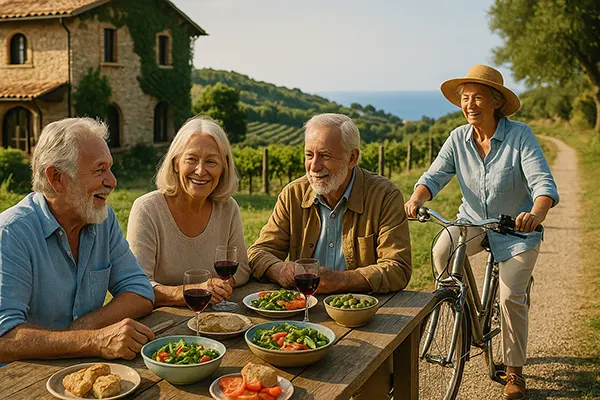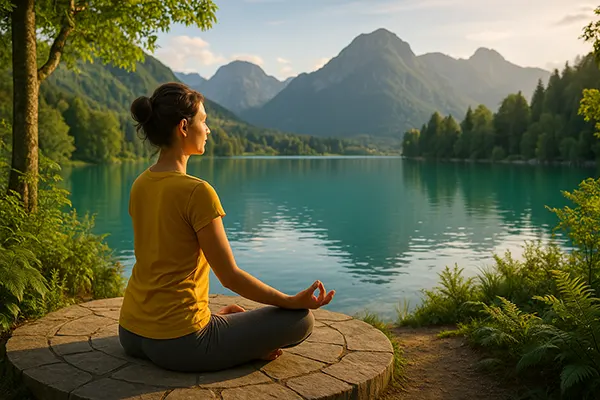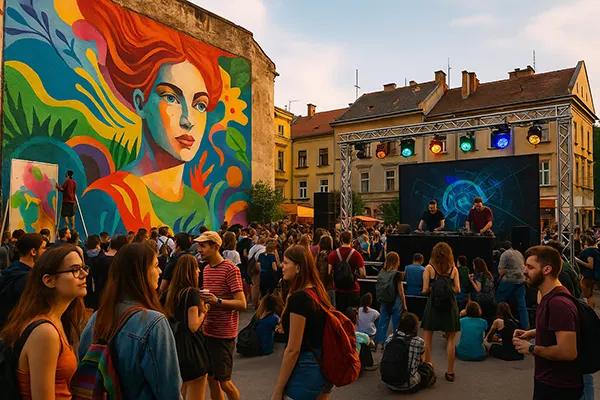
The Secrets of Blue Zones: Why People in Some Regions Live Longer
Across the globe, there are rare places where people live significantly longer, healthier lives. These areas, known as “Blue Zones,” have intrigued scientists, doctors, and sociologists for decades. They reveal that longevity is not merely a matter of genetics but a result of everyday choices, social habits, and environment. Understanding what makes these regions unique provides valuable insights for anyone seeking to improve their own quality of life.
The Origins and Discovery of Blue Zones
The term “Blue Zones” was coined by journalist Dan Buettner in collaboration with National Geographic researchers. During an extensive study of global longevity, they identified five regions with unusually high concentrations of centenarians: Okinawa in Japan, Sardinia in Italy, Nicoya Peninsula in Costa Rica, Ikaria in Greece, and Loma Linda in California, USA. These places are not wealthy or technologically advanced, yet they consistently produce some of the world’s longest-living populations.
Each Blue Zone differs culturally, but they share similar lifestyle patterns. Residents maintain active daily routines, rely on plant-based diets, nurture close social relationships, and possess a clear sense of purpose. These shared traits form the backbone of what is now referred to as the “Blue Zone lifestyle.”
Researchers continue to analyse why these areas excel in longevity. The most striking revelation is that these people do not pursue long life deliberately. Instead, their culture and environment naturally encourage habits that contribute to health and happiness.
What Makes These Regions Stand Out
One of the most compelling aspects of Blue Zones is their emphasis on community. People maintain strong social ties, often living close to family members and friends. Loneliness and social isolation—major health risks in many modern societies—are rare in these communities. Support networks provide emotional stability and shared responsibility for well-being.
Diet also plays a critical role. Meals typically consist of vegetables, whole grains, legumes, and limited portions of fish or meat. Processed foods and refined sugars are uncommon. Moderate alcohol consumption, especially red wine, appears beneficial when integrated into meals and social gatherings.
Finally, daily movement is not exercise in the traditional sense but a natural part of life. Walking, gardening, and household chores keep people active without structured fitness routines. This consistent, moderate physical activity supports cardiovascular health and joint mobility well into old age.
The Role of Purpose and Mental Well-being
Beyond physical health, mental outlook profoundly affects longevity. In Blue Zones, people live with a clear sense of purpose—what Okinawans call “ikigai” and Costa Ricans “plan de vida.” This purpose gives them reason to rise each morning, whether it’s caring for grandchildren, tending to crops, or contributing to the community.
Psychological well-being is reinforced by spiritual and cultural traditions. Many residents engage in daily rituals that promote mindfulness—prayer, meditation, or moments of reflection. These habits reduce stress, improve emotional balance, and support healthy brain function throughout life.
Chronic stress, often linked to shorter lifespans, is rare in these regions. People take time to rest, celebrate, and maintain perspective on life’s challenges. This balance between effort and relaxation may be one of the strongest contributors to their remarkable health.
How Community and Culture Shape Longevity
In most Blue Zones, ageing is not stigmatised but respected. Elders are valued for their wisdom and life experience, maintaining an active role within families and local society. This social respect fosters a strong sense of belonging and reduces anxiety about growing old.
Culture also influences lifestyle rhythm. In Ikaria, the daily pace is slow and unhurried; meals are enjoyed in company rather than rushed. Similarly, Sardinians prioritise time outdoors, laughter, and shared meals—rituals that strengthen emotional bonds and reduce cortisol levels.
Social trust appears to be another essential factor. Residents feel secure in their communities, which diminishes the psychological burden of fear or competition. This emotional stability may translate into lower rates of depression and improved immune resilience.

Practical Lessons from the Blue Zones
The principles of Blue Zones are not exclusive to specific geographies; they can be adopted anywhere. Urban planners, nutritionists, and wellness experts have begun integrating these concepts into modern living, inspiring “Blue Zone-inspired” cities and workplaces.
Simple changes—such as prioritising local produce, walking instead of driving short distances, or fostering social engagement—mirror the daily patterns of long-lived communities. These small, consistent actions can accumulate significant health benefits over time.
Moreover, creating environments that support healthy choices rather than forcing willpower has proven crucial. People thrive when well-being becomes effortless—when the design of their surroundings naturally promotes movement, connection, and balance.
Adapting Blue Zone Habits in Modern Life
Incorporating the lessons of Blue Zones into everyday routines starts with awareness. Limiting processed food, maintaining moderate activity, and cultivating gratitude can have measurable effects on health and longevity.
Equally important is maintaining strong relationships. Joining community groups, volunteering, or spending quality time with friends helps recreate the emotional and psychological support found in traditional Blue Zone societies.
Ultimately, the secret of these remarkable regions lies not in a single diet or practice but in a holistic approach to life. Their longevity is the result of harmony—between mind and body, individual and community, nature and nurture.





